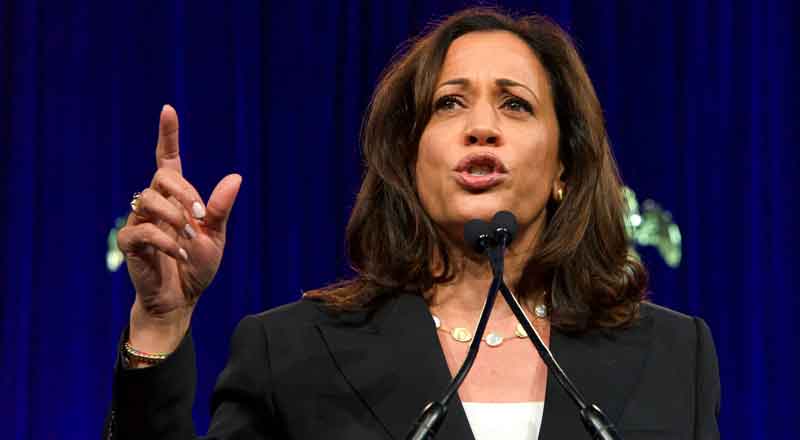A Historic Opportunity Missed
Once again, the United States came close to shattering its longest-standing political barrier—the presidency’s ultimate “glass ceiling”—only to retreat. Kamala Harris, Democratic candidate in the 2024 election, was vying to become the first female, Black, and South Asian President of the United States. Her defeat to former President Donald Trump, a polarizing figure with a history of controversies and legal battles, left supporters and political analysts grappling with questions about the underlying factors that influenced the election, particularly gender bias. Harris’ loss has reignited a broader debate: Is the United States still not ready for a female leader, or were there deeper factors at play?
A Gendered Voting Pattern
An analysis of the voting data from the 2024 election reveals a significant gender divide among voters. According to exit polls, Harris received substantial support from women, while men largely favored Trump. Younger women (ages 18 to 44) favored Harris by a 12-point margin over Trump, while older women also leaned toward Harris but by a narrower margin. Notably, White men continued to support Trump by a wide margin, reflecting a persistent preference that analysts attribute to both cultural conservatism and a perception that Trump projects “strength” in the face of national and international challenges.
Interestingly, Harris did not receive the same enthusiastic support from young voters that President Biden had in 2020. Additionally, her support among Black voters—typically a solid base for Democrats—dipped, with 80% backing her in 2024, down from 90% for Biden. While Harris retained the majority of the Latino vote, Trump made notable inroads, especially among Latino men, who seemed more receptive to his messages about economic security and national strength.
The “Glass Ceiling” Remains Unbroken
The U.S. remains one of the few Western democracies yet to elect a female head of state, raising questions about whether entrenched gender stereotypes still influence American political outcomes. In her campaign, Harris focused on economic and social policies rather than gender identity, even avoiding a direct appeal to her potential to make history. By contrast, Trump’s campaign rhetoric often reinforced traditional gender roles, framing Harris as “unprepared” and lacking the strength required for presidential leadership.
Many Americans, particularly in traditionally conservative regions, expressed concerns about Harris’s ability to lead in times of crisis. Trump’s narrative of needing a “strong man” in charge resonated with a portion of the electorate wary of female leadership in roles historically dominated by men. This perception has led some analysts to conclude that Harris’s gender may have subconsciously influenced voter perceptions of her competence and readiness for the presidency.
The Role of Misogyny in American Politics
Harris’s loss echoed Hillary Clinton’s failed 2016 presidential bid, where gender biases surfaced in both overt and subtle ways. Trump’s campaign leaned heavily into personal attacks, often dismissing Harris as “weak” and “unqualified.” His running mate, JD Vance, even referred to Democratic women as “childless cat ladies,” a dismissive phrase underscoring how entrenched biases are exploited in high-stakes political campaigns. Trump’s approach, while divisive, effectively played on latent gender stereotypes, which some experts argue resonate deeply within American society.
Political scientist Nicholas Valentino noted that Trump’s rhetoric, though inflammatory, likely strengthened his appeal among male voters. This strategy seems to have tapped into a form of “hegemonic masculinity,” wherein voters rally around a candidate who embodies traditional, “strong” male characteristics. Feminist scholars like Susan Faludi have suggested that Trump’s victory highlights a societal preference for assertive, combative leadership often equated with masculinity.
Complicating Factors: Harris’s Campaign Strategy
Beyond gender bias, Harris faced additional obstacles rooted in her campaign’s strategies and messaging. Analysts point out that Harris’s late entry into the race—after President Biden announced he would not seek re-election—left her with limited time to build momentum. Additionally, some of her shifts on critical issues, such as immigration, may have left voters questioning her consistency. While Harris made reproductive rights a cornerstone of her platform, she may have underestimated the complexity of appealing solely on a single issue, especially when competing against Trump’s broader, populist appeal.
Despite the Supreme Court’s 2022 decision to overturn Roe v. Wade, which revoked federal protections for abortion rights, Harris failed to secure the level of female support expected. White women, particularly those without college degrees, largely backed Trump, while Harris saw greater support among college-educated White women. Harris’s support for abortion rights may have resonated with her base but did not translate into broad appeal among conservative and moderate women who viewed economic concerns or national security as higher priorities.
Shifts in Support Among Black and Latino Voters
A significant portion of Black men and Latino men also appeared to lean toward Trump, a shift from the voting patterns observed in previous elections. Harris’s mixed reception within these communities has raised questions about whether her identity as a Black and South Asian woman affected perceptions of her ability to lead. Despite high-profile endorsements, including an impassioned appeal by former President Barack Obama, Harris’s connection with these demographics appeared tenuous.
In focus groups, some Black male voters expressed doubts about Harris’s ability to lead, citing concerns over emotional resilience and decision-making under pressure. These sentiments reflect not only the unique challenges women face in politics but also the intersectional issues that Harris encountered, where gender, race, and cultural expectations about leadership intermingled.
The Path Forward for Female Leaders in the U.S.
Kamala Harris’s loss in 2024 underscores the ongoing struggle for women—and especially women of color—to achieve the highest office in American politics. Her campaign’s shortcomings, coupled with lingering societal biases, illuminate the challenges female candidates face in a system that has yet to normalize women in leadership roles traditionally reserved for men. As Susan Faludi observed, Harris’s campaign may have been “pitch-perfect,” but the defeat suggests a significant journey ahead for future generations of aspiring female leaders.
Trump’s re-election, framed by appeals to “strength” and traditional masculinity, indicates that gendered expectations persist within American political culture. For the United States to finally elect its first female president, it may take not only a candidate who can skilfully navigate political issues but also a societal shift that recognizes and embraces women as equally capable leaders. As the country reflects on this election, the question remains: When will the United States fully break free from its historical reluctance to place a woman in the Oval Office? Until then, the “ultimate glass ceiling” remains intact, awaiting the day when voters are ready to embrace a leader without the confines of gender expectations.
(With inputs from agencies)





